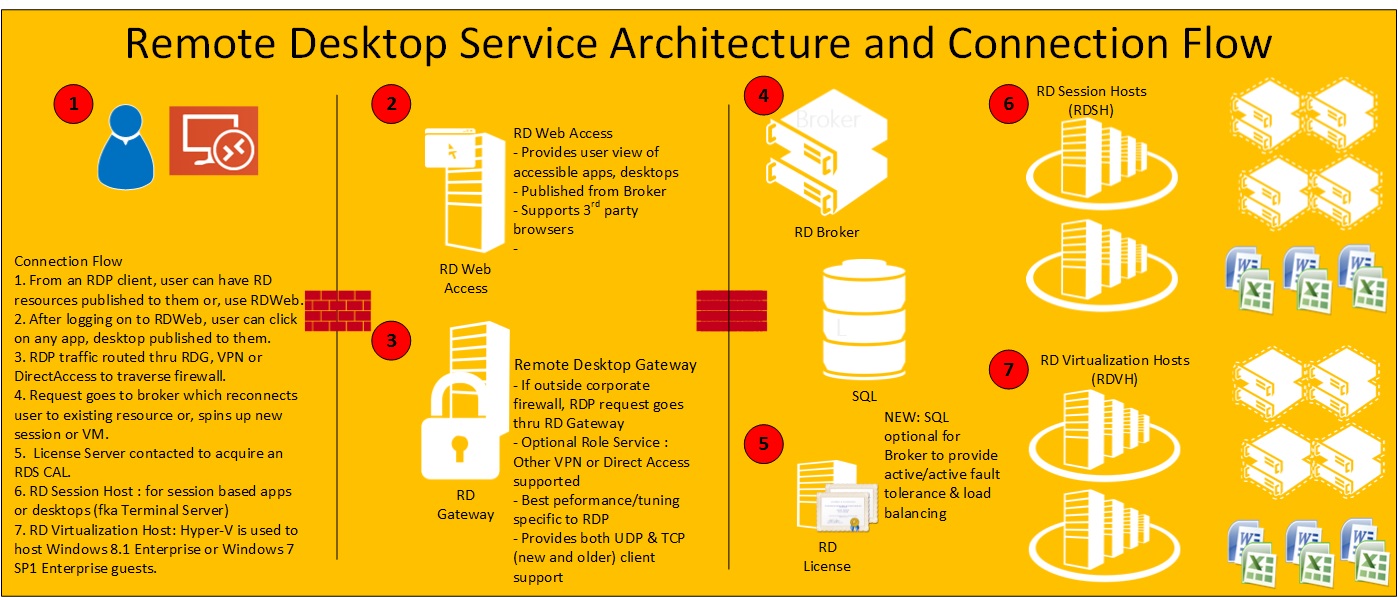Overview of Remote Desktop Services in Windows Server 2008 R2
Remote Desktop Service (RDS), formerly known as Terminal Services, is part of Windows Client and Server that allows users to access a session or application on a remote computer over the network using the Remote Desktop Protocol (RDP). The remote computer can be a Windows client (virtual or physical) or Windows Server running Remote Desktop Session Host role service.
RDS depends on 6 role services, described and graphically shown below:
- 2 RD Web Access aggregates the resources from RD Session Host farms, individual servers, and VM pools to display in a browser or in Windows 7 Start menu. This content is filtered by user permissions.
- 3 RD Gateway makes it possible to securely use RDP over the Internet
- 4 RD Connection Broker brokers connections to the right RD Session Host server or VM, depending on load balancing and whether the user with the incoming request already has a session.
- 5 RD Licensing manages the licenses for accessing the sessions and VMs
- 6 RD Session Host (formerly known as a terminal server) delivers session-based desktops and RemoteApps.
- 7 RD Virtualization Host delivers VMs
- RDS is enhanced in Windows Server 2008 R2 SP1 with the addition of RemoteFX.
- You can manage RDS deployments from the GUI or through Powershell, as described here.
- Information about Remote Control (shadowing), related error messages see here.
- Should you use sessions or VMs? See this blog entry to learn what should drive that decision: http://blogs.msdn.com/b/rds/archive/2010/09/01/don-t-fence-me-in-vdi-session-virtualization-or-both.aspx
